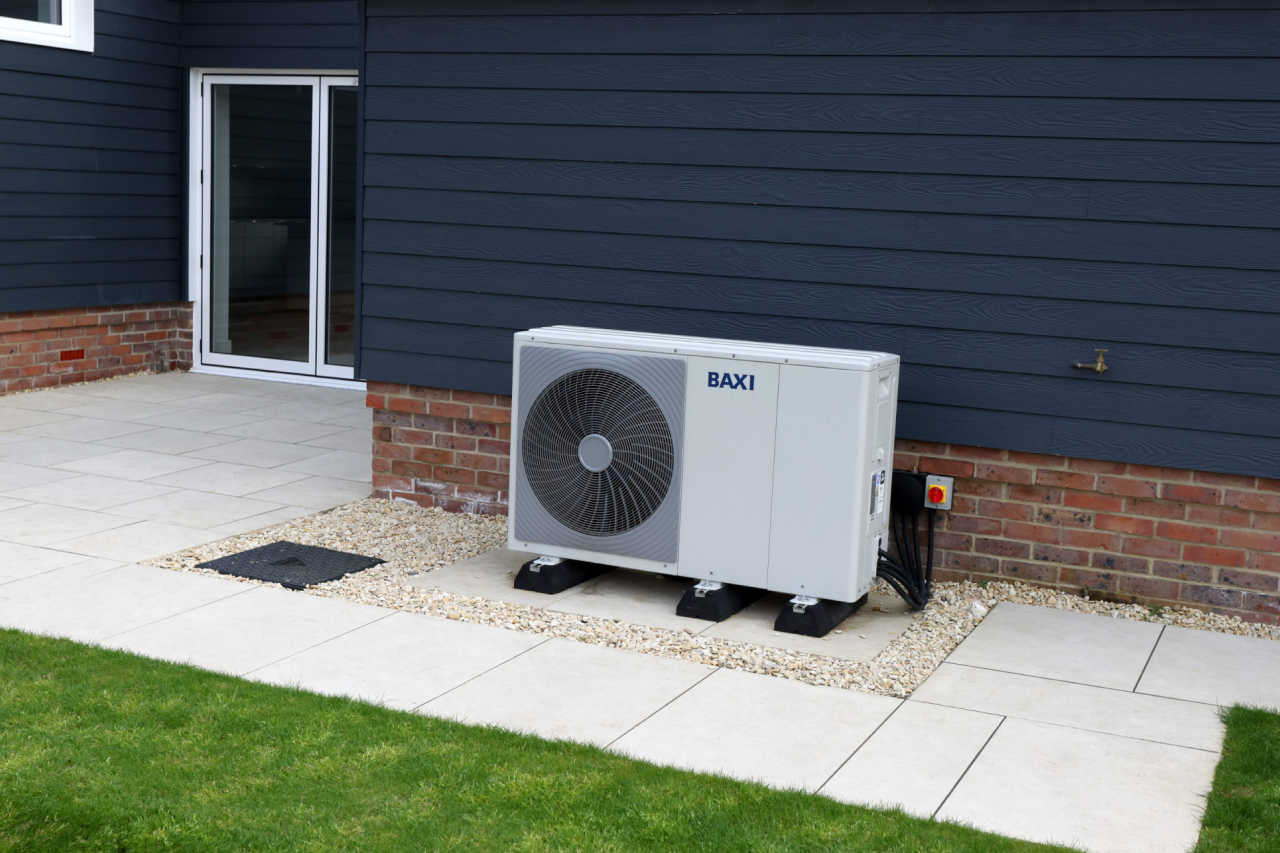Tackling winter changes with air source heat pumps
It's important to understand the potential operational changes that you might notice with an air source heat pump in Winter. As temperatures fall, the pump works harder to extract the limited heat energy in the air, which can reduce efficiency slightly but still remains above the 100% efficiency mark.
A common issue which may be encountered is the build-up of frost and ice on the outdoor unit, affecting airflow and heat exchange. The unit will take care of this issue itself through an automatic defrost setting. You may see white steam coming from the back of the heat pump – don’t worry, this is perfectly normal and is actually a sign that your heat pump is working properly.
Maximising efficiency of your air source heat pump in winter
An annual service maintains the health within the unit itself. It’s key to check the outdoor unit for any snow, ice, or debris on a regular basis to ensure adequate airflow during the colder months.
There are additional steps you can take within your home to enhance the effectiveness of your air source heat pump. Start by setting your thermostat to your preferred temperature and make sure that you have quality insulation fitted around your home. Similarly, check for drafts around windows and doors and seal any gaps you come across.
If you notice that you are using more energy than you expect, or that there is an excessive buildup of ice, then you may need to arrange for an engineer to examine the defrost cycle or other parts of your ASHP’s system.
Technological innovations for winter efficiency
Modern air source heat pumps are equipped with technology to ensure they work efficiently in winter. Features like variable speed compressors and electric heating elements provide reliable warmth even in extremely cold conditions. The defrost cycle is a crucial component, activating when frost builds on the outdoor coils and maintaining the system's efficiency.
Is an air source heat pump right for cold weather?
Though there is a reduction in performance, air source heat pumps remain a viable option for hearing during colder weather. In fact, many Scandinavian countries utilise air source heat pumps for all-round comfort, with 90% of homes in Norway that have a heat pump favouring this type than others.
On average, the UK’s winter temperature has ranged between 0 and 7 degrees Celsius, well within the operating range of most ASHPs. Even during exceptionally cold winters, air source heat pumps are able to extract what little heat remains in the air and use it to provide warmth for your home.
Air source heat pumps by Baxi
At Baxi, our range of air source heat pumps are designed with the latest technology and are fitted by installers certified under the Microgeneration Certification Scheme (MCS). This means you can be assured that your ASHP will be fitted in line with the highest quality standards. By choosing an MCS-certified installer, you could also be eligible for support towards installation costs under the Boiler Upgrade Scheme.
View our range here or find your local Baxi approved installer here to learn about having an air source heat pump installed at your property.





